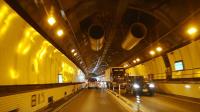 Add My Company
Add My Company
Sign In
Air Flow Monitors in Tunnels
23-05-2019

In most tunnels there are ventilation systems installed of which there are three main types:
Longitudinal ventilation
Cross ventilation
Longitudinal & Cross ventilation
Depending on the conditions and the situations encountered in a tunnel, different airspeeds and direction are applied and validated by the anemometer. The measurement of the anemometer is then used in a closed loop to control the speed of the fan.
Ventilation in road tunnels has three main objectives:
To protect users as much as possible in case of a fire in the tunnel
To limit the pollutant levels within the tunnel under normal operation
To provide good dispersion conditions for the pollutants
Pollution
The ventilation enables dilution of the tunnel air by bringing in the fresh air. Depending on the level of pollutant concentrations (e.g. NO₂ and dust) the ventilation fan will increase or decrease. The setpoint is given by the measurement of the anemometer. The polluted air is pushed towards one or the other of the entrances of the tunnel. The direction is confirmed by the anemometer which expresses positive or negative speeds.
The direction is confirmed by the anemometer which expresses positive or negative speeds.
Fire
For each fire position and back pressure, it is important to control the airspeed by the control of the ventilation. Again, this is achieved very accurately through the anemometers.
Example:
Extractive Fans
The violet arrow shows the traffic direction. It means that all cars before the fire are stopped. All extractive fans before the fire are >. The fan ON allows removal of the smoke to the exit (red arrow) to protect people. A velocity of 3 m/s ensures that the smoke doesn’t go back to the stopped cars. The 1 m/s acts as a barrier to the smoke. The above image shows 3 m/s and 1 m/s are in opposite directions. Therefore, an anemometer is required (for direction & measurement).
Savings
The amount of power used by the fan can fluctuate from 45 Kw to 200 Kw, so controlling the fan by using an anemometer is important in reducing the power consumption and cost involved.
Conclusion
Tunnel ventilation systems are designed to enable a sufficient throughput of air to be maintained to ensure a safe operating environment for users. These systems consume large amounts of power and need to be operated as efficiently as possible.
For more information on Air Flow Monitors in Tunnels talk to Codel International Ltd
Enquire Now
More News
List your company on FindTheNeedle.

